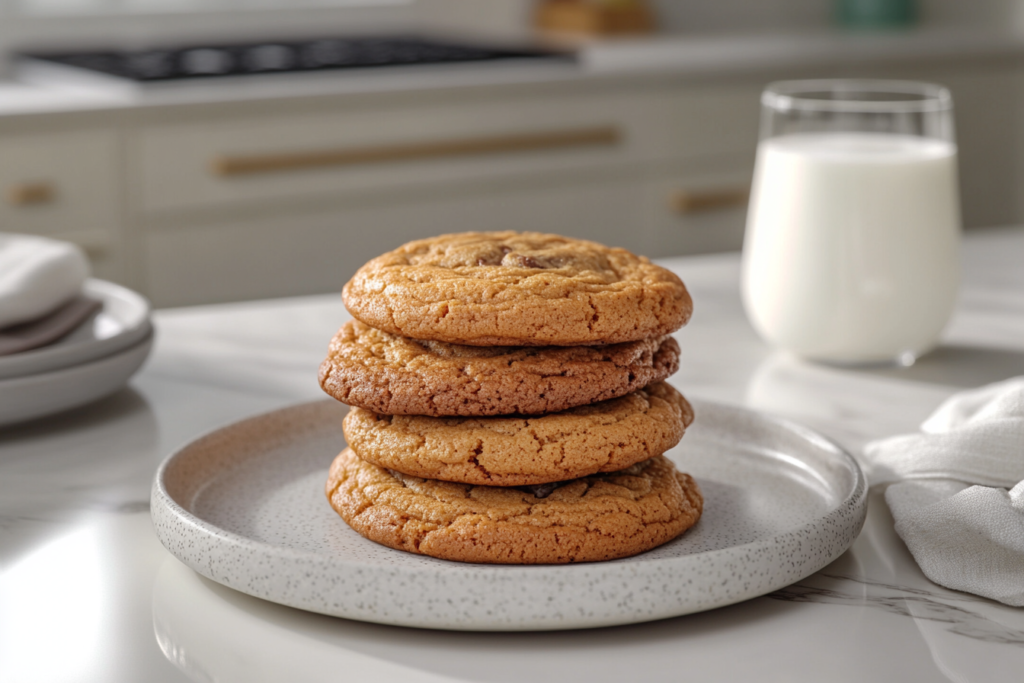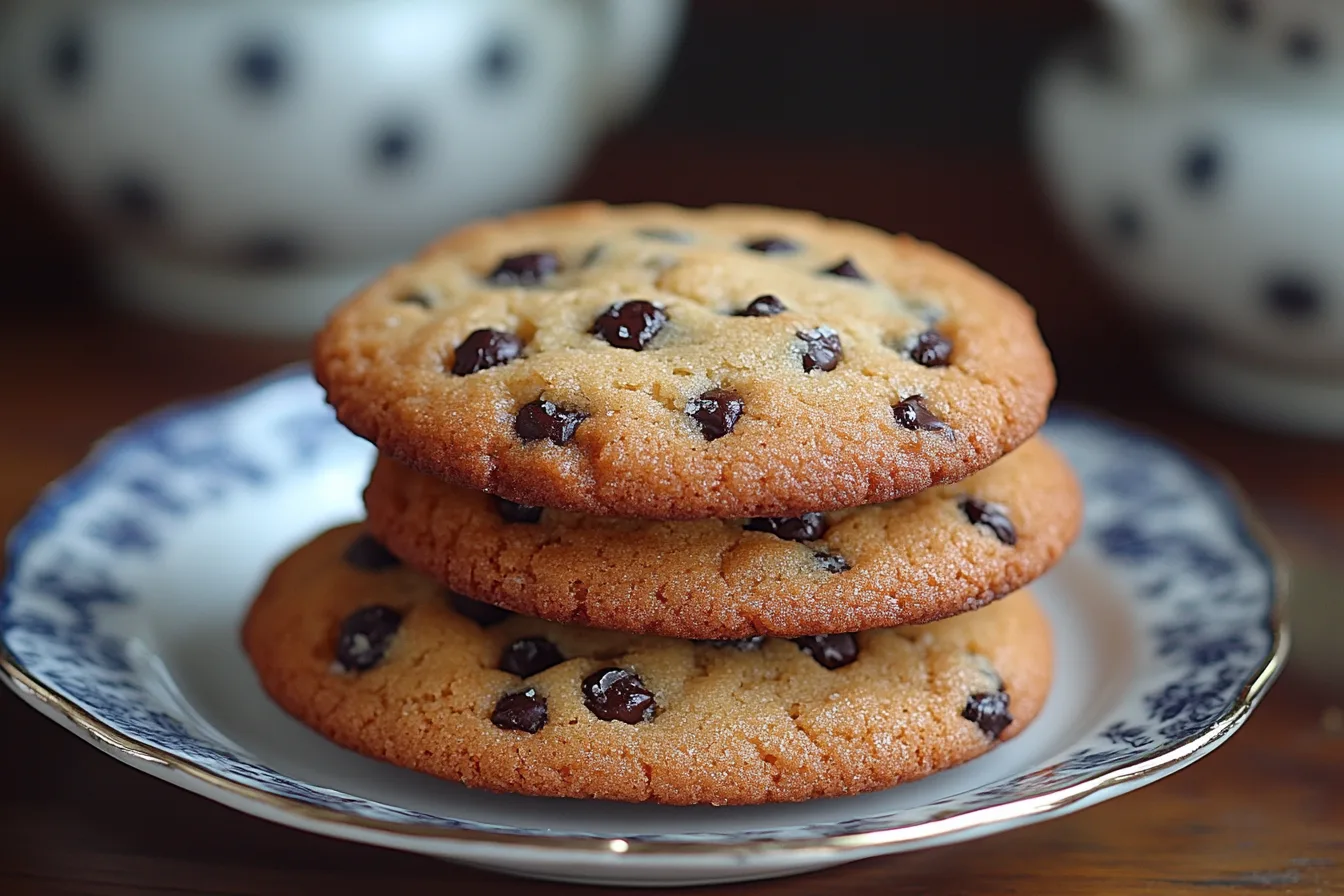The Fundamentals of Crunchy Cookies
When it comes to cookies, there’s a delightful variety of textures to savor, but nothing quite matches the satisfying snap of a perfectly crunchy cookie. Whether you enjoy them dunked in milk or on their own, understanding the science behind crunchy cookies can elevate your baking game. This guide explores the essentials for achieving that irresistible crunch.
What Makes a Cookie Crunchy?
A crunchy cookie is the result of precise balance between ingredients, techniques, and baking conditions. Unlike their chewy counterparts, crunchy cookies have minimal moisture content and a more brittle texture. Here’s a breakdown of the key factors:
- Low moisture content: Achieved by balancing sugars and fats.
- Proper baking time and temperature: High heat and longer baking create a crispy exterior.
- Thin dough: Ensures the cookie bakes evenly and crisps throughout.
Mastering the art of crunchy cookies means understanding how each element contributes to the final texture.
The Role of Ingredients in Crunchy Cookies
Flour Types and Their Impact on Texture

The type of flour you use significantly affects the texture of your cookies. Higher-protein flours like bread flour can produce a denser cookie, but for a classic crunchy texture, all-purpose flour is your best bet. Here’s why:
- All-purpose flour: Provides the ideal balance of structure and tenderness.
- Bread flour: Creates a chewier, less crispy cookie.
- Cake flour: Results in a softer, more delicate cookie that lacks crunch.
For optimal results, stick to all-purpose flour and measure it accurately to avoid overly dense dough. Explore tips on measuring flour correctly here.
Sugar Variants: Granulated vs. Brown Sugar
Sugar not only sweetens but also determines the cookie’s texture. The choice between granulated sugar and brown sugar plays a pivotal role:
- Granulated sugar: Produces a crispier cookie due to its lower moisture content.
- Brown sugar: Adds a chewy texture because of its molasses content.
For a truly crunchy cookie, opt for granulated sugar. You can combine it with a small amount of brown sugar for added flavor without compromising crispness.
Balancing Fat Content for Crunchy Cookies
Butter vs. Oil: Which is Better?
Fat adds flavor and affects the texture of cookies. But not all fats work the same way when aiming for crunch:
- Butter: Contains water, which can create steam and slightly puff up cookies, reducing their crunchiness. However, its rich flavor is unmatched.
- Oil: Contributes to a crunchier texture because it lacks water content and spreads more evenly.
For the best of both worlds, use clarified butter or a combination of butter and a neutral oil like vegetable oil. This approach ensures flavor without sacrificing the crunch.
Temperature and Its Effect on Cookie Crunch
Baking at High Temperatures for Crispness
Temperature is a crucial factor in creating crunchy cookies. Baking at higher temperatures (around 375°F to 400°F) promotes faster moisture evaporation, resulting in a crisp texture. Here’s why:
- High temperatures: Set the cookie’s structure quickly, creating a crispy edge.
- Low temperatures: Allow the dough to spread excessively, resulting in a softer texture.
Monitor baking times closely to avoid burning, as high temperatures can quickly overbrown the edges. Adjust based on your oven’s accuracy, and read about oven calibration here.
The Importance of Thin Dough for Crunch
Rolling and Shaping Techniques
Thin dough is essential for evenly baked, crispy cookies. Techniques like rolling the dough to a consistent thickness (about 1/8 inch) ensure:
- Uniform crispness throughout the cookie.
- Shorter baking times, reducing the risk of overbaking or uneven cooking.
Pro tip: Use parchment paper or silicone baking mats to prevent sticking and make shaping easier.
Cooling Cookies Properly for Maximum Crunch
Air-Drying Techniques After Baking
Proper cooling is often overlooked but critical for achieving maximum crunch. Freshly baked cookies might seem crispy but can soften as they cool if not handled correctly. Here’s what to do:
- Transfer cookies to a cooling rack immediately after baking.
- Allow them to air-dry completely to let residual moisture escape.
- Store in an airtight container with silica gel packs to maintain their crispness.
This technique ensures that your cookies stay delightfully crunchy long after they’re baked.
Professional Secrets to Crunchy Cookies
Creating perfectly crunchy cookies involves more than just following a recipe; it’s about mastering techniques and incorporating advanced tips that take your cookies to the next level. In this guide, we’ll dive into the secrets professionals use to achieve that ultimate crispy bite.
Adding Texture Enhancers to Your Cookies
Adding ingredients with a natural crunch can elevate the texture of your cookies. These inclusions not only enhance the crunch factor but also add layers of flavor.
Incorporating Nuts and Seeds
Nuts and seeds are excellent texture enhancers for cookies. Their natural oils also contribute to flavor depth. Here’s how to use them:
- Chopped almonds, walnuts, or pecans: Provide a robust crunch. Toast them before mixing into the dough for a nutty aroma.
- Seeds: Sunflower, pumpkin, or sesame seeds can add a unique crunch and are a great alternative for those with nut allergies.
Ensure nuts and seeds are evenly distributed in the dough for consistent texture. For more tips, check out this detailed guide on using nuts in baking.
Using Cornflakes or Oats for Extra Crunch
Cornflakes or rolled oats introduce a light, crispy bite to your cookies. Consider:
- Cornflakes: Crush them slightly before adding to the dough for an airy crunch.
- Oats: Opt for old-fashioned rolled oats rather than instant oats, as they retain more structure during baking.
Mix these into the dough or use them as a coating before baking for a textured exterior.
Experimenting with Sugar Ratios
Reducing Moisture by Adjusting Sugar Levels
The ratio of granulated to brown sugar affects a cookie’s moisture and texture. For crunchier cookies:
- Use more granulated sugar: Its lower moisture content helps create a brittle texture.
- Reduce brown sugar: This retains moisture due to its molasses, which is better suited for chewy cookies.
You can also explore alternative sugars like demerara sugar, which has larger crystals for an added crunch.
Pre-Baking Cookie Dough for Extra Crunch
Resting Dough in the Refrigerator Overnight
Refrigerating dough is a classic professional technique for improving cookie texture. Allowing the dough to rest overnight enhances the flavor and creates a firmer, drier texture that bakes into a crunchier cookie. Here’s why:
- Moisture redistribution: Resting lets flour fully absorb liquid, reducing spread during baking.
- Flavor development: Prolonged rest enhances the cookie’s complexity due to sugar caramelization.
Cover the dough tightly to prevent drying out, and for more tips, explore this article on chilling cookie dough.
Substituting Ingredients for a Crunchy Texture
Replacing Eggs with Egg Whites
Whole eggs add richness and moisture, while egg whites contribute to a drier, crispier texture. To create crunchy cookies:
- Replace one whole egg with two egg whites for a drier dough.
- Whip the egg whites lightly before incorporating to add airiness and promote an even bake.
This substitution works especially well in recipes where butter is a primary fat source.
Baking Sheet Selection and Its Influence
Dark vs. Light Baking Trays
The type of baking sheet you use significantly impacts how cookies bake and develop crunch.
- Dark trays: Absorb more heat, leading to faster baking and a crispier bottom. However, watch closely to prevent over-browning.
- Light trays: Reflect heat, resulting in a more even bake but slightly less crispiness.
For optimal results, line trays with parchment paper or use a silicone baking mat to ensure even heat distribution.
The Role of Spices in Enhancing Cookie Crunch
Cinnamon, Nutmeg, and Beyond
Spices may not directly affect texture, but they can enhance the perception of crispiness by adding warmth and depth to the flavor profile. Popular spices include:
- Cinnamon: Adds a sweet, aromatic complexity.
- Nutmeg: Provides a subtle warmth that complements crunchy textures.
- Clove and ginger: Perfect for spiced cookies like gingersnaps, known for their crispness.
Incorporate spices directly into the dough or sprinkle a blend on top before baking for extra aroma.
Classic Crunchy Chocolate Chip Cookies: Tips for Extra Crispness
Crunchy cookies are beloved for their irresistible texture and satisfying bite. From classic recipes to inventive variations, the following guide offers a collection of recipes and creative techniques to bring the perfect crunch to your home baking.
Classic Crunchy Chocolate Chip Cookies

Tweaks to Make Them Extra Crispy
Chocolate chip cookies are a timeless favorite, but achieving a truly crunchy texture requires a few modifications:
- Reduce brown sugar: Use predominantly granulated sugar for a drier, crispier cookie.
- Add cornstarch: Incorporating 1-2 teaspoons of cornstarch can create a more brittle texture.
- Bake longer at lower temperatures: Opt for 350°F and extend baking time by 2-3 minutes to ensure a deep, golden brown finish.
These tweaks result in cookies with a perfect snap and rich chocolate flavor. Check out this classic chocolate chip recipe for inspiration.
Crisp Sugar Cookies: Decorating Without Losing Crunch
Decorating Tips Without Softening the Crunch
Sugar cookies are perfect for decoration, but it’s essential to preserve their crunch:
- Royal icing: Hardens into a crisp layer that complements the cookie’s texture.
- Avoid wet toppings: Avoid glazes or fondants that might add moisture.
Use cookie cutters to create uniform shapes and consider adding a sprinkle of granulated sugar for a glittering, crispy finish before baking.
Gluten-Free Crunchy Cookies: Nutty Flavor with Almond Flour
Using Almond Flour for a Nutty Flavor
For those avoiding gluten, almond flour is an excellent choice to create crunchy cookies:
- Almond flour base: Combines natural oils and structure for a crisp texture.
- Additional binders: Use xanthan gum or egg whites to prevent crumbling.
A simple almond flour biscotti recipe or shortbread-style cookie can deliver delightful crunch and nutty depth. Explore more gluten-free recipes here.
Vegan Crunchy Cookies: Dairy-Free and Egg-Free Variations
Dairy-Free and Egg-Free Variants
Vegan cookies can be just as crunchy with the right substitutions:
- Coconut oil: Provides a solid fat source that contributes to crispness.
- Aquafaba (chickpea water): Works as an egg substitute to bind and aerate the dough.
- Maple syrup or agave nectar: Sweeteners that can be paired with granulated sugar for flavor without excess moisture.
Try a vegan oatmeal cookie with coconut flakes for added texture.
International Crunchy Cookies
International Crunchy Cookies: Biscotti and Speculaas
Italian biscotti are double-baked for their signature crunchy texture. Key techniques include:
- Low-fat dough: Reduces moisture and ensures a crisp bite.
- Double baking: After the first bake, slice the log-shaped dough and bake the slices again at a lower temperature to achieve crunch throughout.
Pair these with coffee or tea for an authentic experience. Learn more about biscotti variations here.
Dutch Speculaas for a Spicy Twist
Speculaas, spiced cookies from the Netherlands, are known for their aromatic crunch. Key elements include:
- Spice blend: Cinnamon, nutmeg, cloves, and cardamom create a warm, festive flavor.
- Thin rolling: Ensures even baking and maximum crispness.
Their thin, decorated shapes make them perfect for holiday gatherings.
Creative Mix-Ins for Crunchy Cookies: Toffee, Pretzels, and More
Adding mix-ins is a fun way to elevate your cookies. Consider these crunchy options:
- Chocolate chunks or toffee bits: Create pockets of crispy caramelization.
- Crushed pretzels: Add a salty, crispy contrast.
- Dried fruits: Like cranberries or apricots for a chewy-crunchy balance.
Mix-ins should be added toward the end of dough preparation to maintain even distribution.
Storing Crunchy Cookies: Tips to Preserve Crispness
Best Practices for Long-Lasting Crunch
Proper storage is essential to keep cookies from losing their crispness. Here’s how:
- Airtight containers: Prevent moisture from softening cookies. Include silica gel packs for added dryness.
- Layer with parchment paper: Keep cookies from sticking together.
- Avoid refrigeration: Moisture in the fridge can make cookies soft. Store them at room temperature in a cool, dry place.
For long-term storage, consider freezing baked cookies and reheating briefly in the oven to restore their crunch.
for more delicious:

